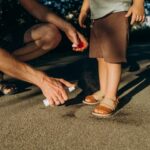A highly contagious respiratory virus is rapidly spreading among children right at the start of back-to-school season. The virus, known as parvovirus B19, typically causes a pink facial rash ― which is nicknamed “slapped cheek” ― in kids and joint pain in adults.
It’s endemic, meaning the virus consistently circulates in the United States, but a spike in recent activity prompted the Centers for Disease Control and Prevention to issue a health alert on Aug. 13.
As Dr. Amesh Adalja, a senior scholar at the Johns Hopkins University Center for Health Security and an infectious disease expert, explained, the health alert is meant to inform clinicians so they can keep an eye out for the disease and treat patients accordingly. The illness, in most cases, is mild and resolves within a week. But the flu-like symptoms could still put a dent in your end-of-summer plans.
Here’s what you should know about parvovirus B19.
As with most infectious diseases, people respond differently to parvovirus B19. About 25% of people who contract the infection remain asymptomatic and never develop any noticeable symptoms, while half experience flu-like symptoms, said Jennifer Walsh, a pediatric nurse practitioner and an assistant professor in the George Washington School of Nursing.
The disease tends to strike in two phases. During the first phase, which hits a week after contracting the infection and lasts about five days, people experience a fever and malaise. The second phase, which occurs seven to 10 days after the first phase, is characterized by a pink facial rash — the ”slapped cheek” — and, occasionally, joint pain and a body rash.
For many kids, the illness presents similarly to other seasonal illnesses and includes a runny nose, fever, headache, nausea and diarrhea, according to Walsh.
People who are immune-compromised may experience complications like anemia or a prolonged infection. The virus will usually not affect pregnant people or their babies, per the CDC, but in rare cases it could spread to your developing baby and increase your risk of complications such as severe anemia or dangerous fluid accumulation, Adalja said.
What’s behind the current surge?
Parvovirus B19 is a seasonal virus that spreads through large respiratory droplets. It typically affects schoolchildren and their caregivers. But in the first quarter of 2024, public health authorities in 14 European countries noticed there was an unusually high number of cases, according to the CDC’s alert. The same trend has now been detected in the U.S.
The alert noted that recent testing revealed that the proportion of people with antibodies targeting parvovirus B19 has increased significantly. The greatest jump was in children ages 5 to 9: 15% tested positive for the antibodies during 2022–2024 compared to 40% in June of this year.
It’s unclear what’s behind the surge, but Walsh suspects the COVID-19 pandemic is to blame.
“Due to our infection control efforts during the COVID-19 pandemic, many respiratory viruses, including parvovirus B19, saw decreased infection rates and decreased immunity,” she said.
As people ditched their face masks and stopped social distancing, many viruses, parvovirus B19 being one of them, experienced a resurgence. That said, this virus is known to trigger a wave of illnesses every few years, and the current wave may be part of the virus’s natural cycle, Adalja said.
Why does parvovirus B19 affect children more than adults?
The illness affects children differently because, for many kids, it’s their first time being exposed to the virus, according to Dr. Zachary Hoy, a board-certified pediatric infectious disease specialist with Pediatrix Medical Group.
Part of being human is being exposed to various pathogens and mounting an immune response against them. This is ultimately how we build immunity against circulating viruses such as influenza.
The majority of adults have previously been exposed to parvovirus B19, so their immune system is able to attack and clear out the virus upon exposure.
“Most people acquire the immunity as children so that when they reach adulthood, they are not susceptible to it,” Adalja said.
Children’s behavior also increases their risk.
“Younger children may not yet have the cognitive ability or motor skills to effectively cover their sneezes and coughs, wash their hands thoroughly or recognize the importance of these behaviors in preventing the spread of illness,” Walsh said.
How to keep yourself — and your family — safe from parvovirus B19.
According to the CDC, there are no vaccines or antiviral treatments that can prevent the infection, and the best way to stay healthy is to wash your hands frequently and thoroughly. Parents should encourage their children to cover their sneezes and coughs and avoid sharing toys, drinks or snacks to avoid unknowingly spreading the virus at school or camp, Walsh recommended.
Adalja said this is an unavoidable endemic illness that everyone comes in contact with at some point.
“The point is not for children to avoid infection but for those with blood disorders and non-immune pregnant persons — in the first trimester — to avoid it,” he said.
If you or your child get sick, you’ll want to isolate at home for a few days while you recover. Adults and children with an underlying condition, such as pregnancy, sickle cell anemia, HIV, cancer or a compromised immune system, should check in with their physician immediately, according to the Mayo Clinic.
Once the rash or the joint pain appears, you are likely no longer contagious, and it’s usually safe to go back to work or school, according to the CDC. Most people will be back on their feet within a week or so by resting, icing painful joints, hydrating and taking over-the-counter medications like acetaminophen, ibuprofen or naproxen sodium.
And if anything seems off ― like your symptoms don’t improve or get worse after a week ― check in with your doctor. As with all things, the sooner you get checked out, the better the outcome will be.

